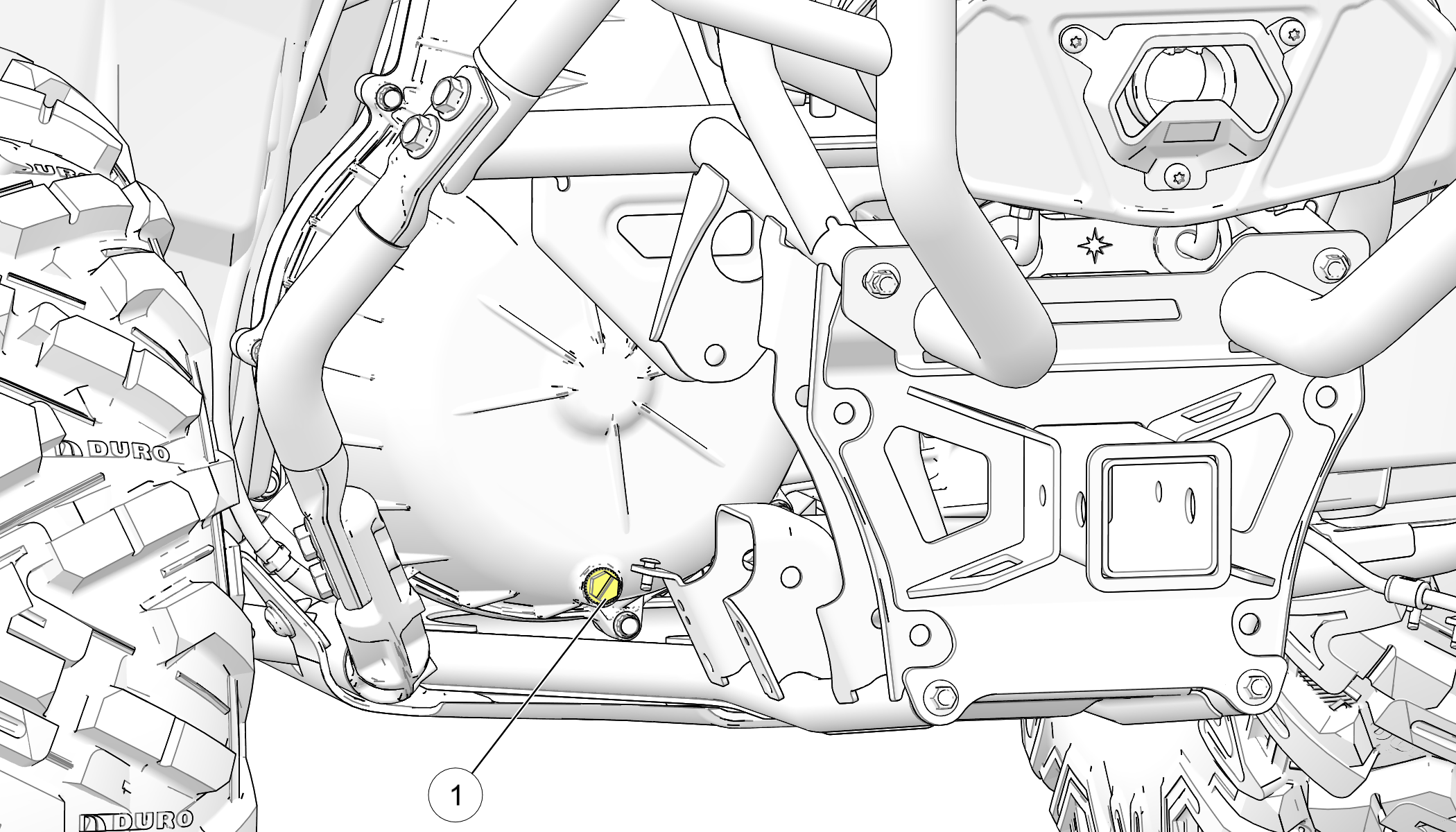PVT System
Do not modify any component of the PVT system. Doing so may reduce its strength so that a failure may occur at a high speed. The PVT system has been precision balanced. Any modification will cause the system to be out of balance, creating vibration and additional loads on components.
The PVT system rotates at high speeds, creating large amounts of force on clutch components. Extensive engineering and testing has been conducted to ensure the safety of this product. However, as the owner, you have the following responsibilities to make sure this system remains safe:
-
Always follow all recommended maintenance procedures. Always look for and remove debris inside and around the clutch and vent system when replacing the belt.
-
See your POLARIS dealer, or other qualified person, for service and repair assistance.
-
This PVT system is intended for use on POLARIS products only. Do not install it in any other product.
-
Always make sure the PVT housing is securely in place during operation.
The basic operation of the POLARIS PVT system is dependent on engine speed and vehicle torque requirements. As engine speed increases, the force exerted on the movable drive sheave by the flyweights also increases. This, in turn, increases the amount of pinch applied to the drive belt. Similarly, if the engine speed decreases, the amount of centrifugal force decreases, reducing the amount of belt pinch.
On POLARIS ATVs, the approximate gear ratio difference between high and low range is 1:2.25. This difference in gearing affects the operation of the PVT, especially at speeds less than 7 MPH (11 km/h), due to the system's dependence on engine speed.
For example, when operating at a ground speed of 3 MPH (5 km/h) in low range, the engine speed would be around 3000 RPM. This is well above the engagement speed of 1600 - 1800 RPM. However, in high range at 3 MPH (5 km/h), the engine would be running at only 1500 RPM. Whenever operating this close to the engagement speed, the engine may be running at a speed too low to provide the pinch needed to prevent belt slip. Belt slip is responsible for creating the excessive heat that destroys belts, wears clutch components and causes outer clutch covers to fail.
The air temperature in the clutch cover is substantially reduced by using low range while operating at low ground speeds. Reducing the temperature inside the clutch cover greatly extends the life of the PVT components (belt, cover, etc.).
When to Use Low Range and High Range
|
Condition |
Range to Use |
|---|---|
|
Operating at speeds less than 7 MPH (11 km/h) |
Low |
|
Towing heavy loads |
Low |
|
Operating in rough terrain (swamps, mountains, etc.) |
Low |
|
Operating at speeds greater than 7 MPH (11 km/h) |
High |
PVT Drying
There may be some instances when water is accidently ingested into the PVT system. Use the following instructions to dry it out before operating.
-
Position the vehicle on a level surface.
-
Remove the drain plug 1. Allow the water to drain completely. Reinstall the drain plug.

-
Start the engine. Place the transmission in PARK.
-
Apply varying throttle for 10-15 seconds to expel the moisture and air-dry the belt and clutches. Do not hold the throttle wide open for more than 5 seconds.
-
Allow the engine RPM to settle to idle speed, then shift the transmission to low range.
-
Test for belt slippage. If the belt slips, repeat the process. Your vehicle requires service as soon as possible, which your authorized dealer can provide.